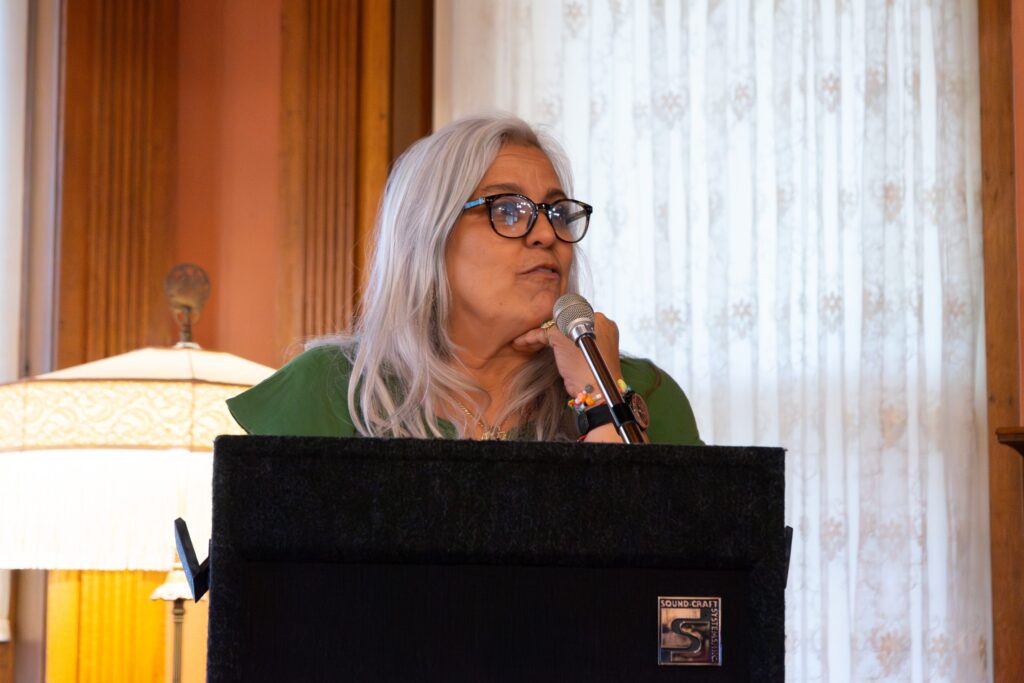As parents and community members share their concerns about Fort Worth ISD’s plans to close and consolidate campuses, one local preservation nonprofit is concerned about the future of the structures themselves.
Historic Fort Worth has placed nine properties, including six Fort Worth ISD facilities, on its 2025 Most Endangered Places list. The list serves to rally financial support around buildings that are at risk of demolition because of deferred maintenance or vandalism, or are worthy of a historic designation. The nonprofit first presented its list in 2004 and took a brief hiatus during the COVID-19 pandemic.
Community members nominated sites for inclusion on the list in hopes that the recognition of a specific property will help its preservation efforts.
This spring, school district officials have shared proposals for closing several schools over the next five years due to declining enrollment and rising maintenance costs.
Historic Fort Worth is encouraging Fort Worth ISD officials to landmark five schools, which are currently undesignated historic buildings, before they are sold, said Alyssa Banta, a Historic Fort Worth board member. As in prior years, the district-owned Farrington Field was also included on the group’s list.
“The Fort Worth ISD has given the school children of Fort Worth an amazing collection of architecturally significant buildings in which to learn,” she said. “Many undesignated historic schools shape the neighborhoods where they are located.”
S.S. Dillow Elementary
The southeast Fort Worth elementary school, 4000 Avenue N, was built in 1937. The campus was named after Samuel S. Dillow, a civic leader, who served as president of First State Bank of Polytechnic. He was also a Polytechnic school board trustee, when Poly had its own separate school system, according to Fort Worth ISD.
In late April, Fort Worth ISD trustees voted to close S.S. Dillow at the end of the 2024-25 school year after Dillow’s principal noted wall cracks, shifting doors and loose titles in the administrative wing. District officials estimated it would take more than $5.4 million to bring the 87-year-old building up to standard, even before the latest structural concerns surfaced.
Also included on the list was McLean Middle School, J.P. Elder Middle School, Hubbard Heights Elementary and Richard J. Wilson Elementary — all of which have been considered for closure by district officials.
Oakwood Cemetery Chapel
Oakwood Cemetery Chapel, 701 Grand Ave., was built in December 1879 on land donated by Fort Worth pioneer John Peter Smith. Oakwood is the second-oldest cemetery in Fort Worth and was known as the “City Cemetery” or “New City Cemetery” until it was renamed in 1885.
The cemetery in Fort Worth’s Northside holds the memories, names and stories of some of Cowtown’s earliest founders side by side with later generations.
The chapel, which is operated by the Oakwood Cemetery Association, needs up to $100,000 in repairs. The chapel roof is in need of replacement due to water penetration, and the stained-glass windows are secured by wooden frames that are severely rotted, according to its nominator.
Primera Baptist Church
The historic Northside Fort Worth church, 1519 Circle Park Blvd., was built in 1927, three decades after the congregation was established. The North Fort Worth Baptist Church owned the site for much of the 20th century before fellow Baptists Primera took over the complex in 1988, according to county property records.
In early February, Austin-based developers O-SDA Industries sought tax credit endorsements from Fort Worth for plans to convert Primera Baptist Church into an 82-unit apartment complex, according to the Fort Worth Star-Telegram.
City council members scrapped a resolution of support Feb. 25 after the proposal prompted weeks of debate in Northside neighborhood meetings and online forums. Some residents feared the apartment development would invite crime and disrupt the block. Others argued the project would make good use of the deteriorating building.
The project didn’t move forward after city officials pulled support.
List ‘brings good results’
Jerre Tracy, executive director of Historic Fort Worth, said she’s seen the positive impact the lists can have on properties that are featured.
Last year’s list featured the R. Vickery School, a southeast Fort Worth campus built in 1910. The building served white students up until the early 1960s, when it briefly closed and reopened as a school for students of color.
The building remained a school through the mid-1980s. A portion of the building was turned into a nightclub, which closed in 2004. The city seized the property in 2007. The building later sat vacant, frequently attracting people experiencing homelessness.
By December 2024, Fort Worth approved the sale of the historic school to Alpha Phi Alpha, a Black fraternity that plans to redevelop the property and create a space for its Alpha Academy mentorship program, a workforce training program and other community resources.
“Seeing that is exactly why we love doing this list,” Tracy said. “It brings good results for the properties that shape Fort Worth’s unique identity.”
David Moreno is the arts and culture reporter for the Fort Worth Report. Contact him at [email protected] or @davidmreports.
At the Fort Worth Report, news decisions are made independently of our board members and financial supporters. Read more about our editorial independence policy here.
Related
Fort Worth Report is certified by the Journalism Trust Initiative for adhering to standards for ethical journalism.
Republish This Story
![]()


